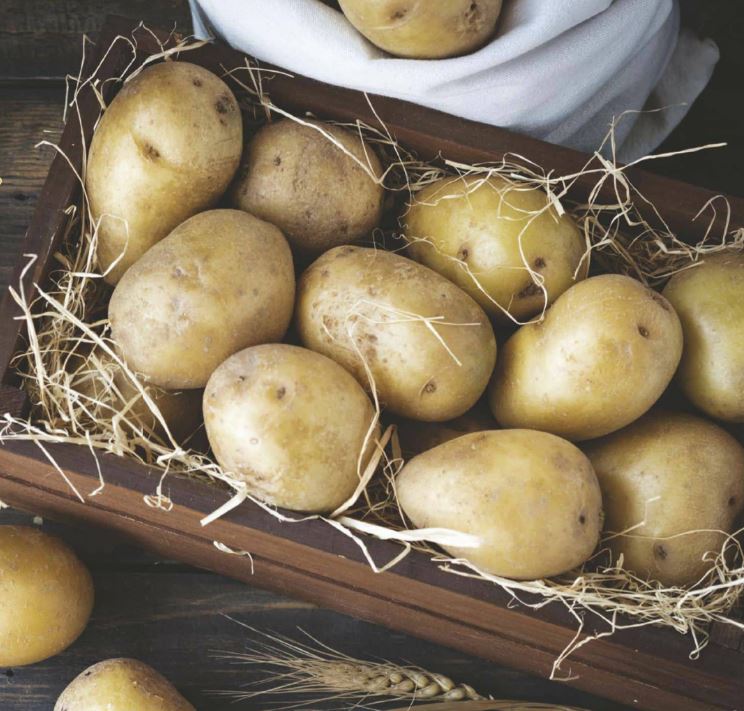
Root cellaring is the simplest form of food preservation. Storing produce in a root cellar can be a good deal if you have the right kind of vegetables and fruits and a humid, cold location. Root cellaring, also called cold storage, cool storage and underground storage, takes advantage of the natural coldness of late fall and winter and the insulating coolness below the ground to keep your harvest fresh for a couple of weeks or an entire winter.
Root cellaring is incredibly easy, but it isn’t foolproof. That is because the low temperatures aren’t powered by electricity, so they’ll vary, as will the shelf life of your produce. As a result, you’ll have to check the food regularly, adjusting the temperature and humidity, and remove any fruits and vegetables that are starting to spoil.
Store only top-quality produce without blemishes, bad spots or wounds. Any weakness can invite decay or disease, which can spread to other fruits and vegetables. And only store produce suited for long-term cold storage. Good choices for root cellaring are apples, cabbages, pears, firm cool-season root crops and hard-shelled squash — the crops that seem to last forever if forgotten in the back of the refrigerator. (See “Storage Guide” on page 50 for a list of the best crops to store.)
Handle produce destined for storage with great care during and after harvesting to avoid bruises and damage. Don’t wash the fruits and vegetables, even if they are dirty. Instead, just rub the soil off with a soft cloth or glove or rinse it off gently under running water. Then let the water evaporate before storing. And if you harvest on a warm autumn day, let the food chill in the refrigerator before you put it into storage. Otherwise, it’ll take a long time to cool down and could spoil in the process.
Esta historia es de la edición September - October 2023 de Hobby Farms.
Comience su prueba gratuita de Magzter GOLD de 7 días para acceder a miles de historias premium seleccionadas y a más de 9,000 revistas y periódicos.
Ya eres suscriptor ? Conectar
Esta historia es de la edición September - October 2023 de Hobby Farms.
Comience su prueba gratuita de Magzter GOLD de 7 días para acceder a miles de historias premium seleccionadas y a más de 9,000 revistas y periódicos.
Ya eres suscriptor? Conectar

The RISE of Opportunist WEEDS
Be prepared to see increasing changes in weeds we fight, such as poison hemlock and poison ivy, and in the crops we grow.

LIVESTOCK Health
Prepare yourself for how to spot symptoms of illness in your farm animals so that you can get them help before it's too late.

CUT FLOWER Farming
If you're considering growing flowers for sale, brush up on these five key things to know before diving in.

WINTER Survival
Keep your land, animals and yourself in good shape this winter with this helpful advice.

COVERAGE CONCERNS
Avoid common insurance mistakes for rural and hobby farm businesses.

FARMER'S GUIDE Berries
Set the stage for tasty strawberries, blueberries and brambles with these soil-boosting garden tips.

Preconditioning CALVES
Follow our step-by-step guide to get more money for your calves.

Soil Conservation
Often, outside of having a specific problem that needs to be addressed, soil conservation isn't something every farmer readily thinks about. Yet conserving the soil should be at or near the top of every farmer owner or manager's list of concerns because absent the prevention of soil erosion, we have the opportunity for another dust bowl.

Year-Round Lettuce & Salad Mixes
It's easy to think of salad greens as just a spring- or fall-garden crop, but it's possible to enjoy freshly harvested lettuces, mustards and more from your own garden year-round.

Barn Improvements
Days are never long enough for a farmer. From dawn to well into the night, tasks arise that often require immediate action. Having to search for tools or equipment is an enormous time waster and incredibly frustrating when you can't find what you need, especially when you know you have it.